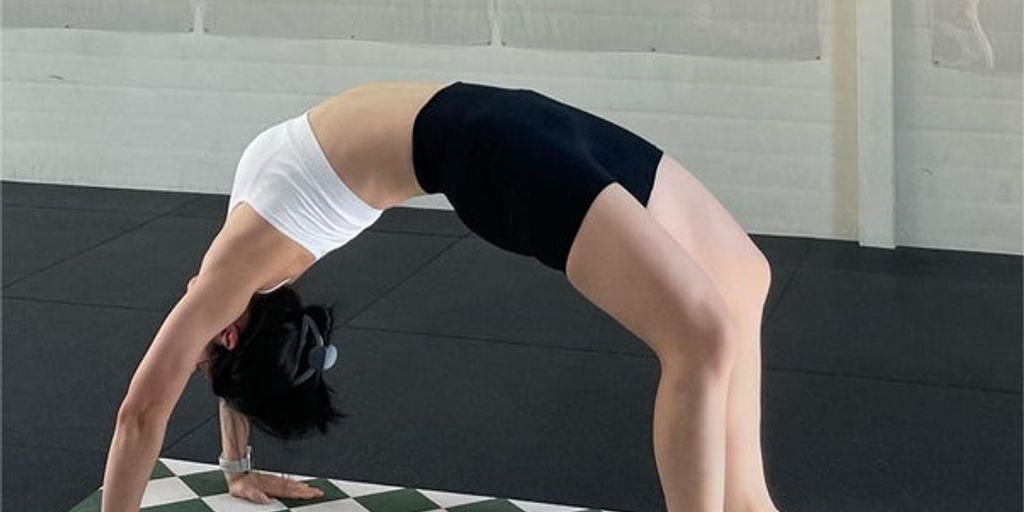
The Ultimate Guide to Choosing the Perfect Hot Yoga Mat
Hot yoga is a popular way to stay fit and healthy, but choosing the right mat for your practice is crucial. Not all yoga mats are created equal, and using the wrong one can lead to discomfort or even injury. This guide will help you find the perfect hot yoga mat by covering everything from material choices to maintenance tips.
Key Takeaways
- Choosing the right hot yoga mat can make a big difference in your practice.
- Materials matter; consider both natural and synthetic options.
- Grip and texture are important for stability and sweat absorption.
- Size and thickness affect comfort and portability.
- Proper care and maintenance will extend the life of your mat.
Understanding the Importance of a Hot Yoga Mat
Why a Specialized Mat Matters
Choosing the right hot yoga mat is crucial for your practice. A quality yoga mat can increase balance and stability, making poses easier to hold. It also provides a better surface for your body, reducing strain and discomfort. Additionally, specialized mats are often more durable and cost-effective in the long run.
Health Benefits of Using the Right Mat
Using the right mat can have several health benefits. It can help prevent injuries by providing a stable and non-slip surface. This is especially important in hot yoga, where sweat can make things slippery. A good mat can also be more hygienic, as it is easier to clean and less likely to harbor bacteria.
Common Mistakes to Avoid
When choosing a hot yoga mat, avoid these common mistakes:
- Picking a mat that is too thin, which can lead to discomfort.
- Choosing a mat with poor grip, which can cause slips and falls.
- Not considering the material, which can affect durability and hygiene.
Remember, investing in a good mat can make a big difference in your yoga practice.
Material Matters: Choosing the Best Fabric for Your Hot Yoga Mat
Natural vs. Synthetic Materials
When picking a hot yoga mat, you can choose between natural and synthetic materials. Natural mats, like those made from rubber or jute, are eco-friendly and provide a good grip. Synthetic mats, often made from PVC, are durable and usually cheaper. Choosing the right material can make a big difference in your practice.
Eco-Friendly Options
If you care about the environment, look for mats made from sustainable materials. Options like cork, natural rubber, and organic cotton are great choices. These mats are not only good for the planet but also offer excellent performance. Eco-friendly mats are becoming more popular as people become more aware of their environmental impact.
Durability and Maintenance
A good yoga mat should last a long time and be easy to clean. Natural mats might need more care, but they can last just as long as synthetic ones if maintained properly. Synthetic mats are usually easier to clean and can handle more wear and tear. Regular cleaning and proper storage can extend the life of your mat.
Picking the right material for your hot yoga mat is crucial for both your practice and the environment. Make sure to consider all options before making a decision.
Grip and Texture: Ensuring Stability During Practice
Non-Slip Features
When practicing hot yoga, having a mat with non-slip features is crucial. A good grip ensures you stay stable even when you start to sweat. Look for mats with a textured surface or those made from materials that naturally provide traction.
Texture Preferences
The texture of your mat can greatly affect your practice. Some people prefer a smooth surface, while others like a more textured feel. Experimenting with different textures can help you find what works best for you.
Sweat Absorption
Sweat absorption is another important factor. Mats that absorb sweat can help prevent slipping and keep you comfortable. However, they may require more frequent cleaning. Consider mats with moisture-wicking properties to keep your practice safe and enjoyable.
Choosing the right grip and texture for your hot yoga mat can make a big difference in your practice. Take the time to find a mat that meets your needs and enhances your stability.
Size and Thickness: Finding the Perfect Fit
Standard Dimensions
When choosing a hot yoga mat, it's important to consider the standard dimensions. Most mats are around 68 inches long and 24 inches wide. However, if you're taller, you might need a longer mat to ensure comfort during your practice.
Thickness for Comfort and Support
The thickness of your mat can greatly affect your comfort and support. Mats typically range from 1/16 inch to 1/4 inch thick. Thicker mats provide more cushioning, which can be beneficial for those with sensitive joints. On the other hand, thinner mats offer better stability and balance.
Portability Considerations
If you travel often or attend classes at different studios, portability is key. Thinner mats are usually lighter and easier to carry. Some mats even come with straps or bags for easy transport. Consider how often you'll be moving your mat when making your choice.
Finding the right size and thickness for your hot yoga mat can make a big difference in your practice. Take the time to consider your needs and preferences to ensure you get the best mat for you.
Price vs. Quality: Making an Informed Decision
When it comes to hot yoga mats, finding the right balance between price and quality is crucial. Investing in a good mat can make a big difference in your practice, but it's important to know what you're paying for.
Budget-Friendly Options
If you're just starting out or on a tight budget, there are plenty of affordable mats that still offer decent performance. Look for mats that provide good grip and durability without breaking the bank. These mats might not have all the bells and whistles, but they can still help you stay cool with the best hot yoga mat for intense workouts.
Premium Mats and Their Benefits
On the other hand, premium mats often come with extra features like better traction, enhanced durability, and superior thickness. These mats are designed to last longer and provide a more comfortable experience. While they may cost more upfront, they can be a worthwhile investment for serious practitioners.
Cost-Effectiveness Over Time
When considering the cost-effectiveness of a mat, think about how often you practice and how long the mat will last. A more expensive mat that lasts for years can be more cost-effective in the long run compared to a cheaper mat that needs to be replaced frequently. Choosing the right mat with excellent grip, durability, traction, and thickness can save you money over time.
Remember, the right mat can enhance your practice and make each session more enjoyable. Choose wisely and consider both your budget and your needs.
Caring for Your Hot Yoga Mat
Cleaning and Maintenance Tips
Keeping your hot yoga mat clean is essential for both hygiene and longevity. Regular cleaning helps prevent the buildup of sweat and bacteria. Use a gentle, natural cleaner or a mixture of water and vinegar. Wipe down your mat after each session and deep clean it once a month.
Storage Solutions
Proper storage can extend the life of your mat. Always let your mat dry completely before rolling it up to avoid mold and mildew. Store it in a cool, dry place away from direct sunlight. Consider using a mat bag for added protection.
When to Replace Your Mat
Even with the best care, yoga mats don't last forever. Look for signs of wear and tear, such as thinning or loss of grip. If your mat no longer provides the support you need, it's time to invest in a new one. A good rule of thumb is to replace your mat every 6 to 12 months, depending on usage.
Taking good care of your hot yoga mat ensures a safe and enjoyable practice every time.
Taking care of your hot yoga mat is essential to keep it in top shape. After each session, wipe it down with a damp cloth to remove sweat and dirt. For a deeper clean, use a gentle soap and water solution. Let it air dry completely before rolling it up. Regular maintenance will extend the life of your mat and keep it fresh for every practice. For more tips and to explore our range of yoga mats, visit our website.
Conclusion
Choosing the perfect hot yoga mat doesn't have to be hard. By thinking about what you need, like grip, thickness, and material, you can find a mat that works best for you. Remember, the right mat can make your yoga practice more enjoyable and safe. Take your time, try out different mats if you can, and listen to what your body needs. Happy yoga!
Frequently Asked Questions
Why do I need a special mat for hot yoga?
A special mat for hot yoga helps you stay safe and comfortable. It grips better when wet, so you won't slip during your poses.
What materials are best for hot yoga mats?
Natural rubber and microfiber are popular choices. They absorb sweat well and provide a good grip.
How thick should my hot yoga mat be?
A mat that's about 4-6mm thick is usually a good choice. It gives enough cushion for your joints without being too bulky.
How do I clean my hot yoga mat?
You can clean your mat with water and mild soap. Some mats can even be machine washed. Always check the care instructions.
Are expensive yoga mats worth it?
Expensive mats often last longer and provide better grip and comfort. But there are good budget options too.
When should I replace my hot yoga mat?
You should replace your mat when it starts to wear out or lose its grip. This can be anywhere from 6 months to a few years, depending on how often you use it.


